My favourite part of Genshin Impact isn’t the exploration, or the combat, or the characters. It’s the food. I love entering new areas in the fictionalised world of Teyvat and discovering ingredients and recipes.
The various dishes in the game are consumables that can be used to restore health, stamina, or increase combat stats. You can get most recipe ingredients in stores or by foraging in the wilds. Besides harvesting berries from wild bushes, you can catch fish in rivers, hunt wild boars, and pick flowers for seasoning. Smash a supply crate and you can even find vegetables like carrots and tomatoes.
In Teyvat, regions representing Germany (Mondstadt) and China (Liyue) are but a short hike away. That proximity helps Genshin Impact inadvertently replicate the immigrant experience of having breakfast pizza in the morning and dim sum in the afternoon.
For a lot of folks in the Chinese diaspora, myself included, food is how we understand place, people, and geography. When I enter a Chinese restaurant, I’m scanning the menu photos for tells about which region the chefs hail from. Is most of the menu made up of rice dishes or wheat dishes? What shape are the noodles? Which American ingredients have they improvised with? Food is capable of telling us a story about where the chefs are from and where they have been, if you know the tells. Teyvat is a fictional world, so it doesn’t allow real life to constrain its imagination of what Chinese food can be. Some savoury foods have been transformed into sweet dishes, and some ingredients have been substituted for gameplay reasons. Genshin tries to tell its own fantasy story, rather than a historical saga.
There are currently 57 recipes in the game. Around half of them are loosely based on real Chinese foods. Here are some dishes that have a story beyond their flavour text.
Crystal Shrimp Dumplings
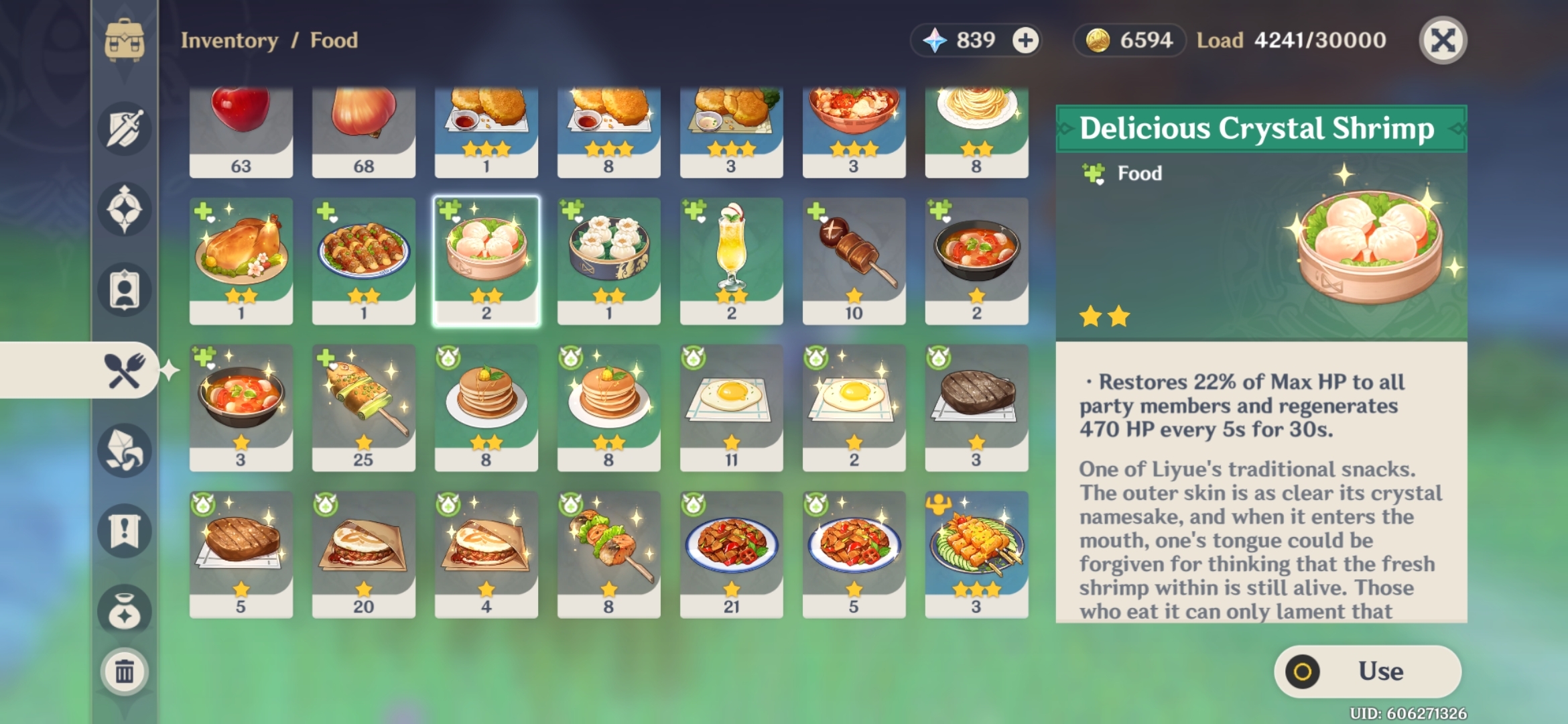
For the good of America, I haven’t gone to dim sum in months. It is a necessary sacrifice, but a difficult one. The delicious-looking shrimp dumplings in Genshin have made my quarantine all the more unbearable. These sticky dumplings are filled with shrimp paste, which makes them starchy-soft on the outside and chewy-firm on the inside. The “crystal” in the name refers to the translucence of the wrapper, which teases you with a half-glimpse of the savoury pink shrimp within. God, I can’t go to dim sum right now. I’m not sure if I’ll make it all the way to the end of this article.
Anyway, these dumplings are pretty ideal for adventuring in Tevyat. They’re bite-sized for easy transport!
Countryside Delicacy
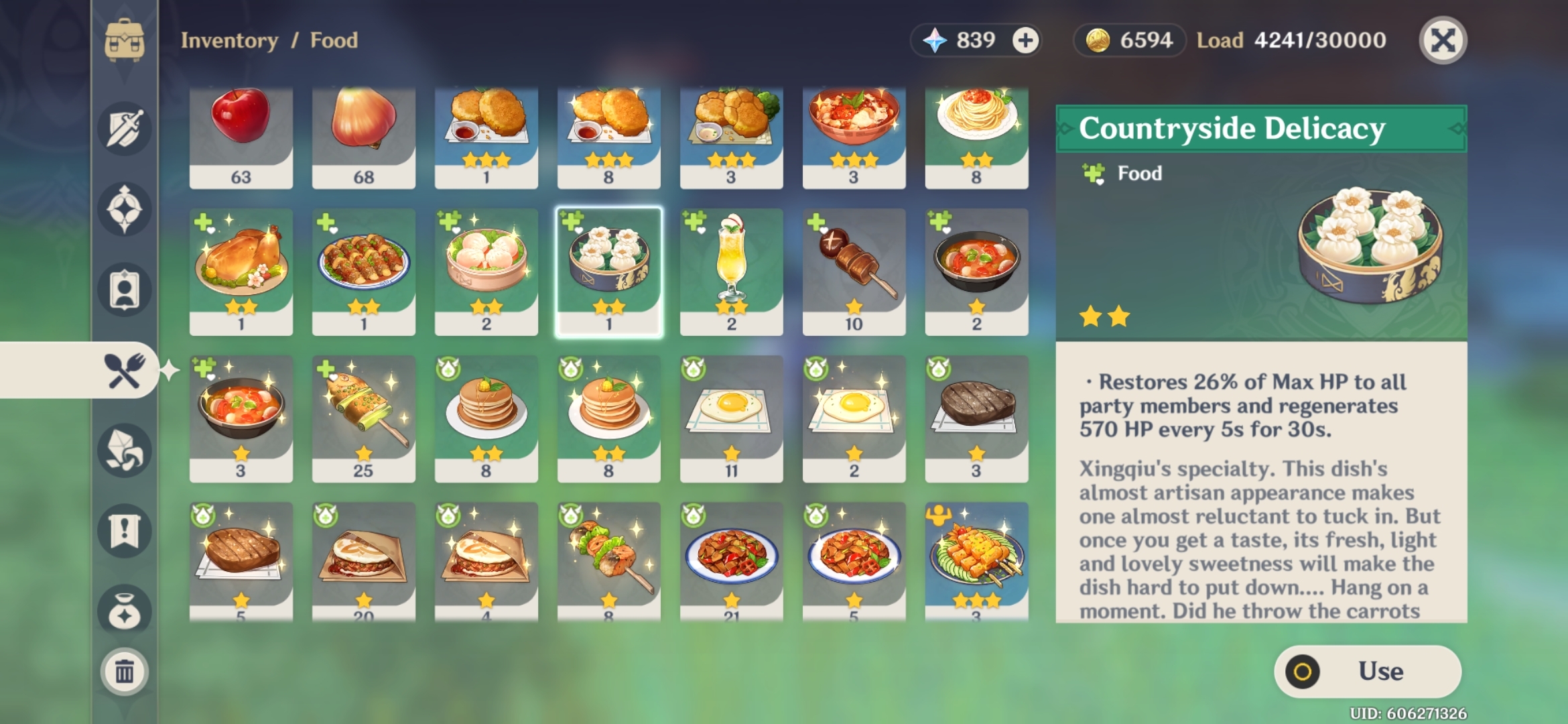
This is just shumai, isn’t it? It’s clearly a shumai, down to the carrot in the ingredient list! Despite the recipe’s reference to sweetness, Cantonese shumai is a savoury dumpling made of pork and shrimp.
The Countryside Delicacy is a rare dish that accidentally occurs when the playable character Xingqiu makes Crystal Shrimp Dumplings, which is absolutely hilarious to me. Like, “Oops, I accidentally grabbed wonton wrappers and made a dessert dumpling!” That’s typical for our absentminded bookworm, I suppose.
Chicken and Mushroom Skewer
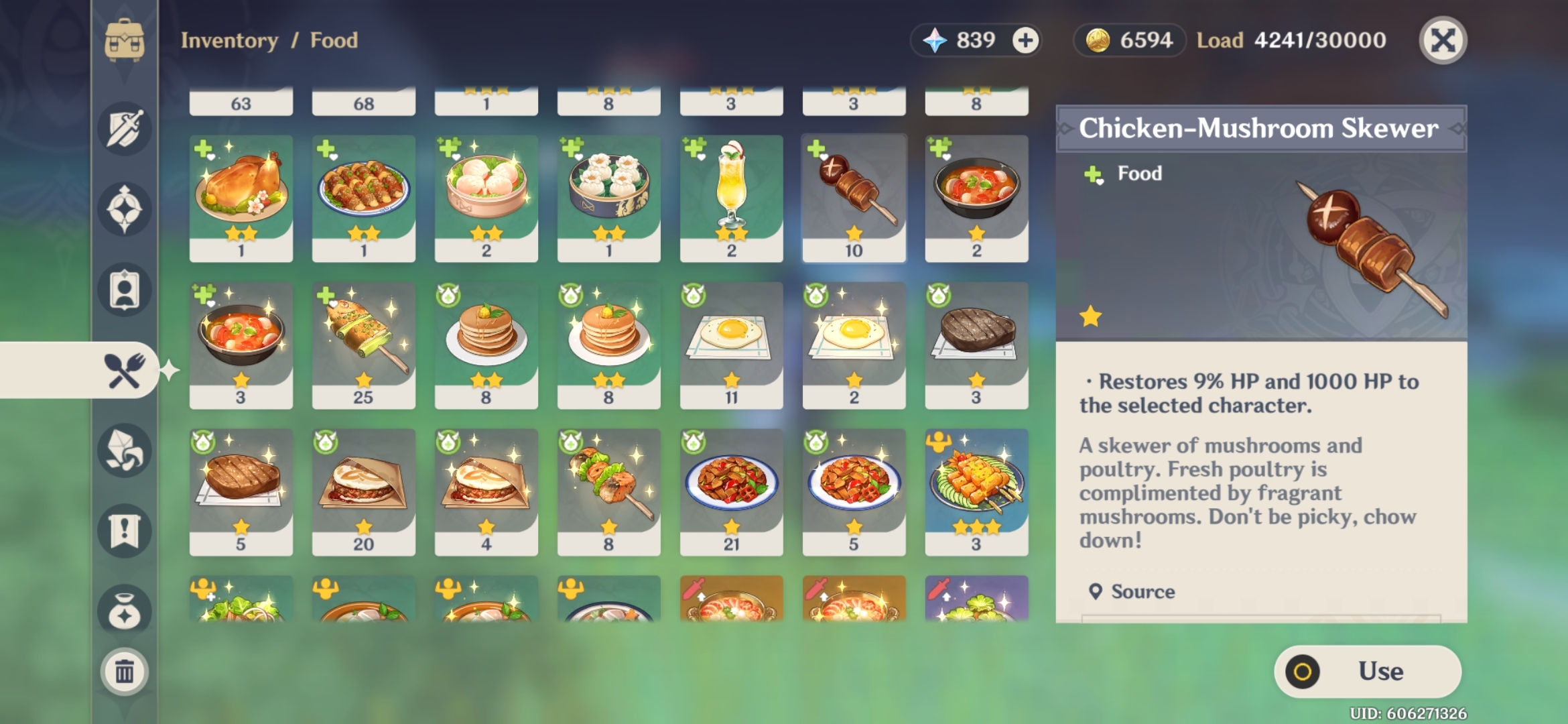
It’s always easy to spot the glowing sign of a skewer stall at night, since the character for skewer (串) literally resembles meat on a stick. Skewered meat (or chuan) is popular in Northern China, but it was brought over by Turkic groups from Central Asia. The ones in Genshin are made of chicken and mushroom, but the real chuan is made of fatty lamb seasoned with chilli powder and cumin. It’s basically a Chinese version of a street kebab. The meat is dense with flavour, but it’s broken up by the gooey lamb fat that melts in your mouth. I suspect that my affinity for chuan is the reason I subsisted on halal restaurants when northern Chinese food was not available near my university. It’s a similar food DNA.
Although the skewers are commonly eaten as street food in Chinese cities and communities within the diaspora, they are now more often served by sit-down restaurants. This is because city inspectors cracked down pretty hard on street vendors after the 2008 Olympics in Beijing. Could modernisation coexist with the informal economy? It’s a huge struggle in China, but this isn’t a question that Genshin Impact has to answer. If anything, chuan is an efficient way to restore health when you’re trying to snarf down a bite before cutting down a slime monster.
Chop Suey
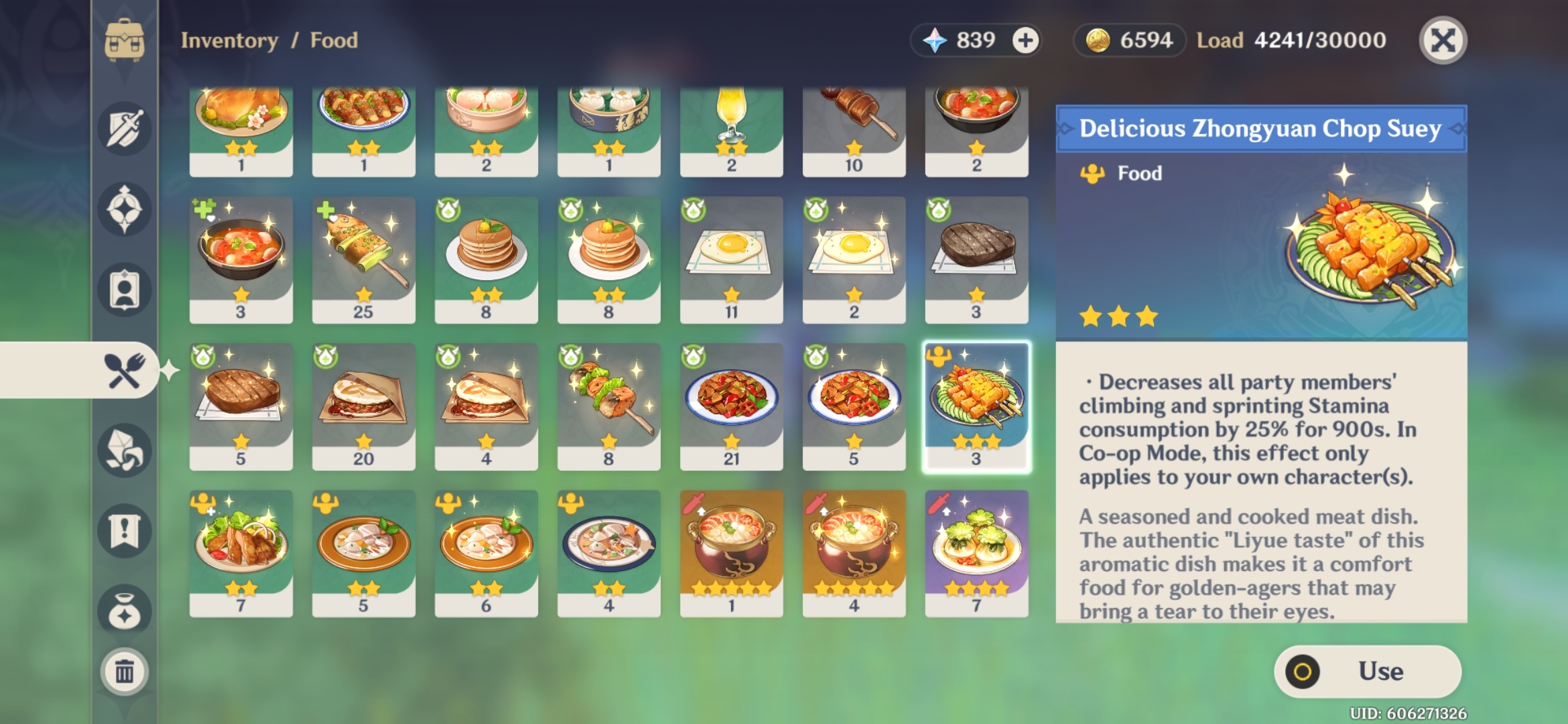
If you know anything about chop suey, then you will probably call bullshit on this one. In real life, chop suey is a Chinese American dish of mixed vegetables and meat on a bed of rice or noodles. The chop suey in Genshin are fried meatball skewers, and they are a local specialty in a fantasy Chinese city.
To be clear, chop suey is a dish with Chinese American origins. Genshin Impact was made in China, but the dish was named chop suey in both the English and Chinese flavour text. I was heartened by how the game’s inclusion of the dish serves as an acknowledgment of Chinese immigrant culture. I know that Chinese American culture is considered lesser by many people in the mainland, and the inclusion of a dish named chop suey was validation that I wasn’t expecting from a video game.
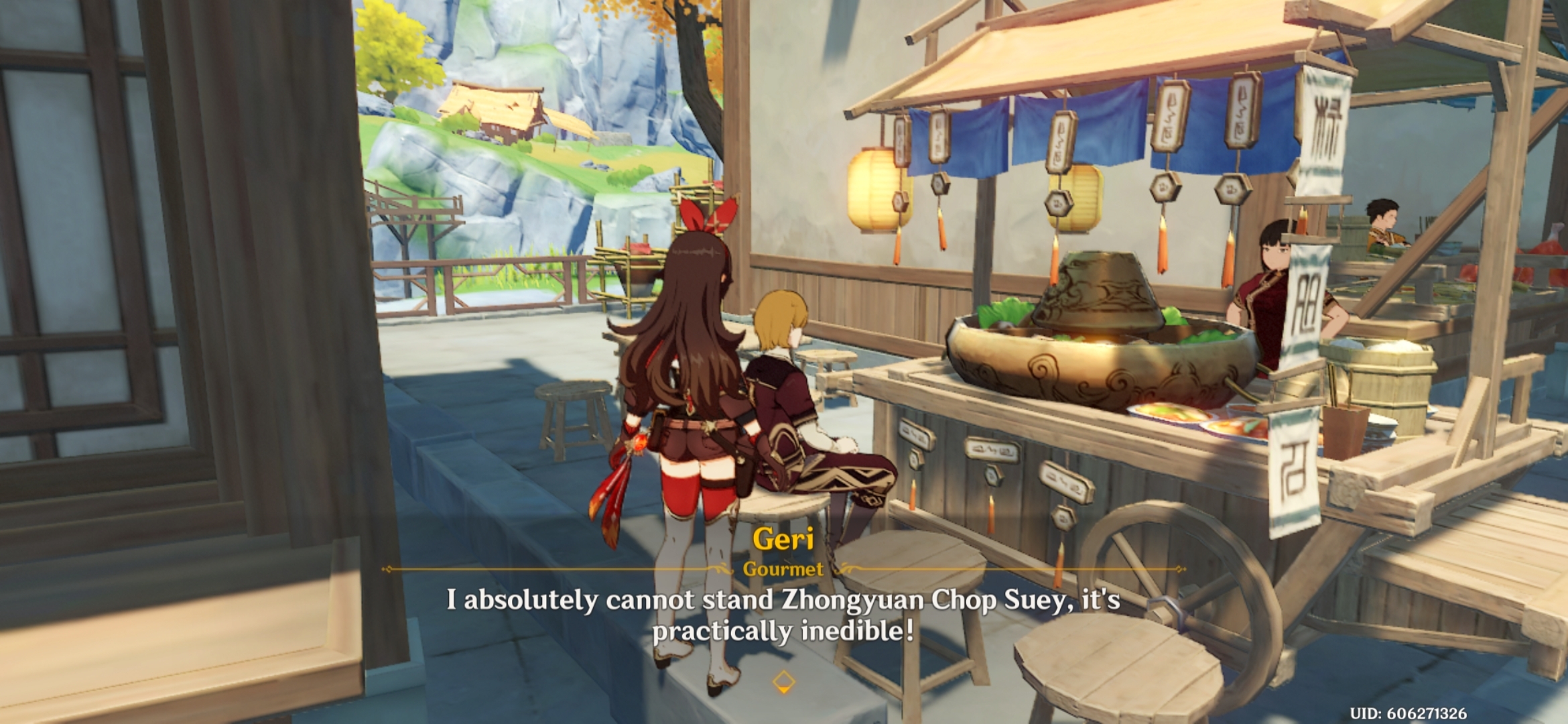
However, our attitudes toward food are also defined by the places we come from, and the places we have been. Not everyone in the game is a fan of chop suey. Geri is a visiting character from Mondstadt, and considers chop suey to be utterly inedible. In many ways this reflects early American attitudes towards Chinese food, and the continued disdain towards eating animal innards. When COVID-19 became internationally prevalent, some Westerners blamed wet markets, due to their perception that Chinese food was inferior. An American senator once declared: “You cannot work a man who must have beef and bread, and would prefer beef, alongside a man who can live on rice.” Such would necessarily “bring down the beef-and-bread man to the rice standard.” This was a dangerous mentality that combined fatally with the association of Chinatowns with disease, which led to the 1899 burning of Honolulu’s Chinatown. I was surprised to see that this othering dynamic was reflected in a video game, especially since Geri’s sister was present to chastise him for his immature palate.
Delicious Jueyun Chilli Chicken
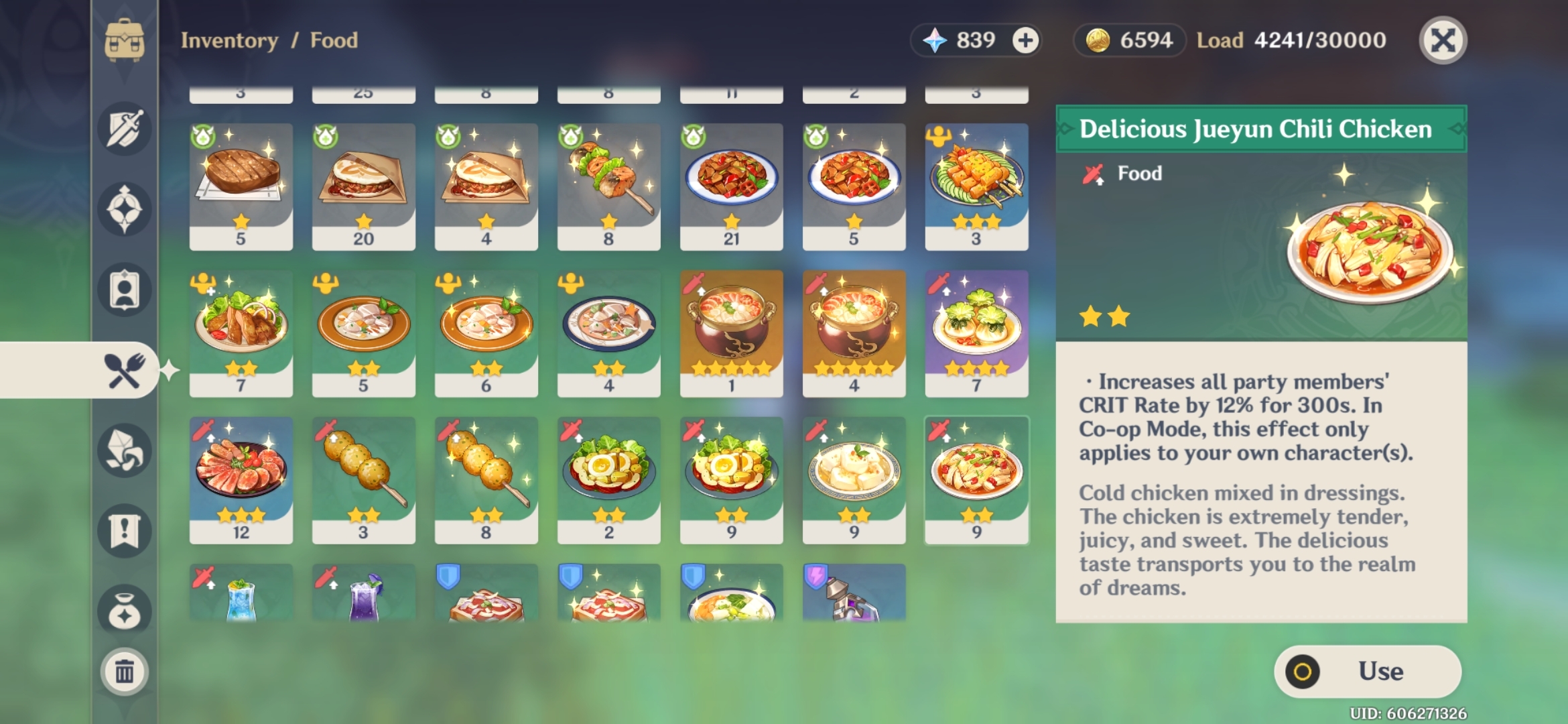
During my travels in Genshin’s Liyun, I came across a spicy “chilli” called the Jueyun chilli. It’s clearly not a chilli. It resembles a bell pepper, and real chillis are long and pointy. In the Chinese version of the game, it is called 椒.
You know what other round spice is called a pepper in English, is associated with spicy dishes, and isn’t a chilli? The Sichuan peppercorn! It seems that the Jueyun chilli is a fantasy cross between the Sichuan peppercorn, bell peppers, and actual chillis. All of these things are called 椒, just like the Jueyun ingredient in the game.
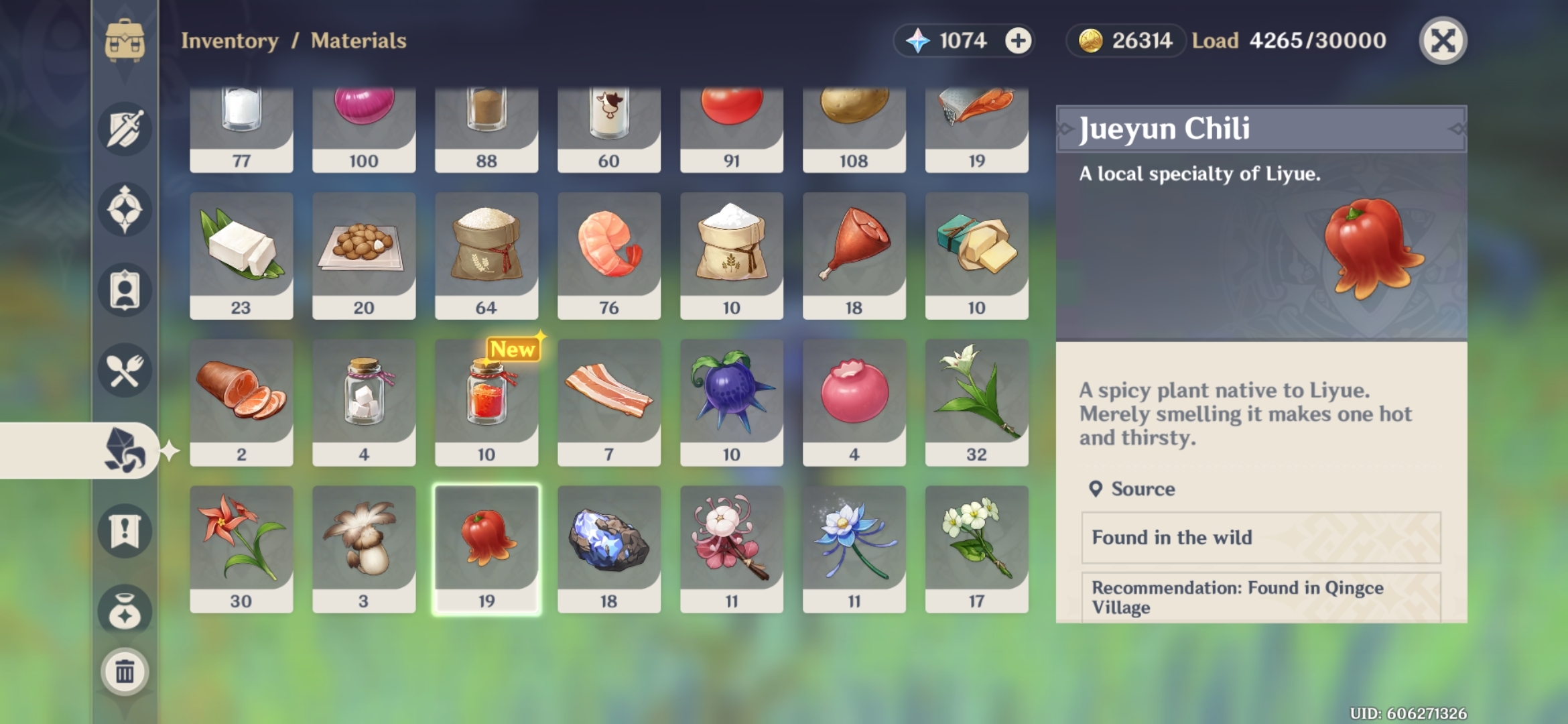
What does it mean for chicken to have Jueyun flavour? Well, the most famous spicy foods in China are from the Sichuan province. Their dishes are known for explosively hot flavour that might be more familiar to American readers in the form of Kung Pao chicken, spicy hot pot, and mapo tofu. These flavours are a combination of garlic, chillis, and sichuan peppercorn, and are typically eaten with meat mixed with vegetables.
Sichuan spiciness is literally mouth-numbing. The expression “ma-la” refers to how the sichuan peppercorn reacts chemically in a way that creates a tingling feeling inside of your mouth. So these peppers aren’t only a novelty fantasy ingredient; they represent an inland region that is famous for its spicy cuisine. Liyue broadly represents China, but it contains references to multiple kinds of Chinese communities.
Jade Parcels
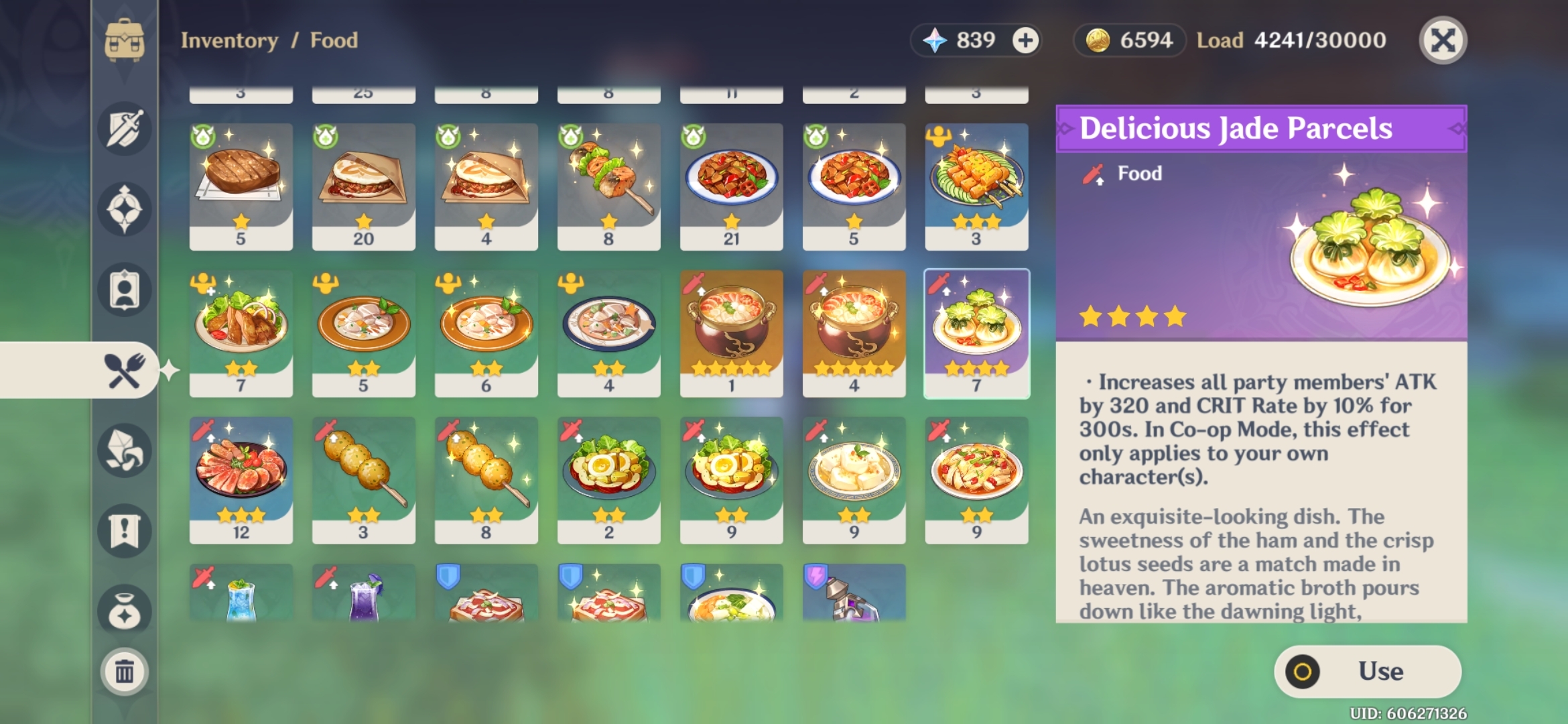
Imagine you’ve set a game in a mish-mash of different cultural influences and put European dragons in it. Why would you force your characters to eat normal carrot soup and roast pork? I love that Genshin keeps making up random food names. Absolutely sublime, you funky game developers.
At first glance, jade parcels look like xiaolongbao soup dumplings, but with the tops dyed green. Did you know that xiaolongbao originally referred to a kind of steamed bun? I was shocked when I realised that American xiaolongbao are a kind of soup dumpling! If you examine the ingredients, Genshin shows that it takes tongue-in-cheek inspiration from multiple foods. Lotus seeds are not typically eaten in soup dumplings or steamed buns, but they are eaten in soups and breakfast congee. The jade parcel is a playful mashup between soup dumplings and actual soup.
Almond Tofu
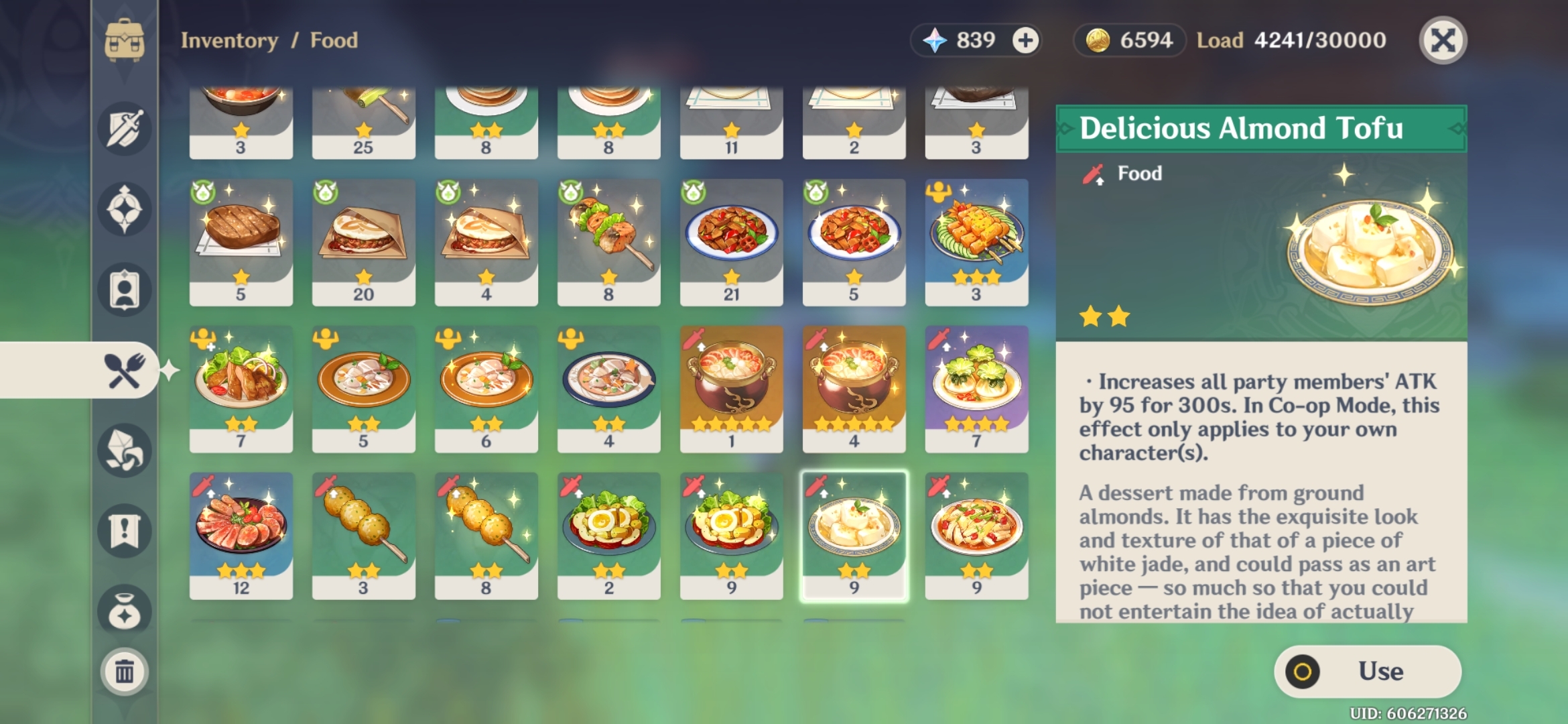
Despite its name, almond tofu is a gelatin dessert that contains no actual tofu nor almonds. Its subtle sweetness is a fantastic compliment to the fruit cocktail that I usually add to the mix. It’s usually eaten chilled on hot summer days. It’s comparable to jello desserts, but with less sweetness.
Although Genshin forces you to make them out of whole almonds, you’re better off with trying to make almond tofu from boxed powder mix at the Asian grocery store.
Delicious Mora Meat
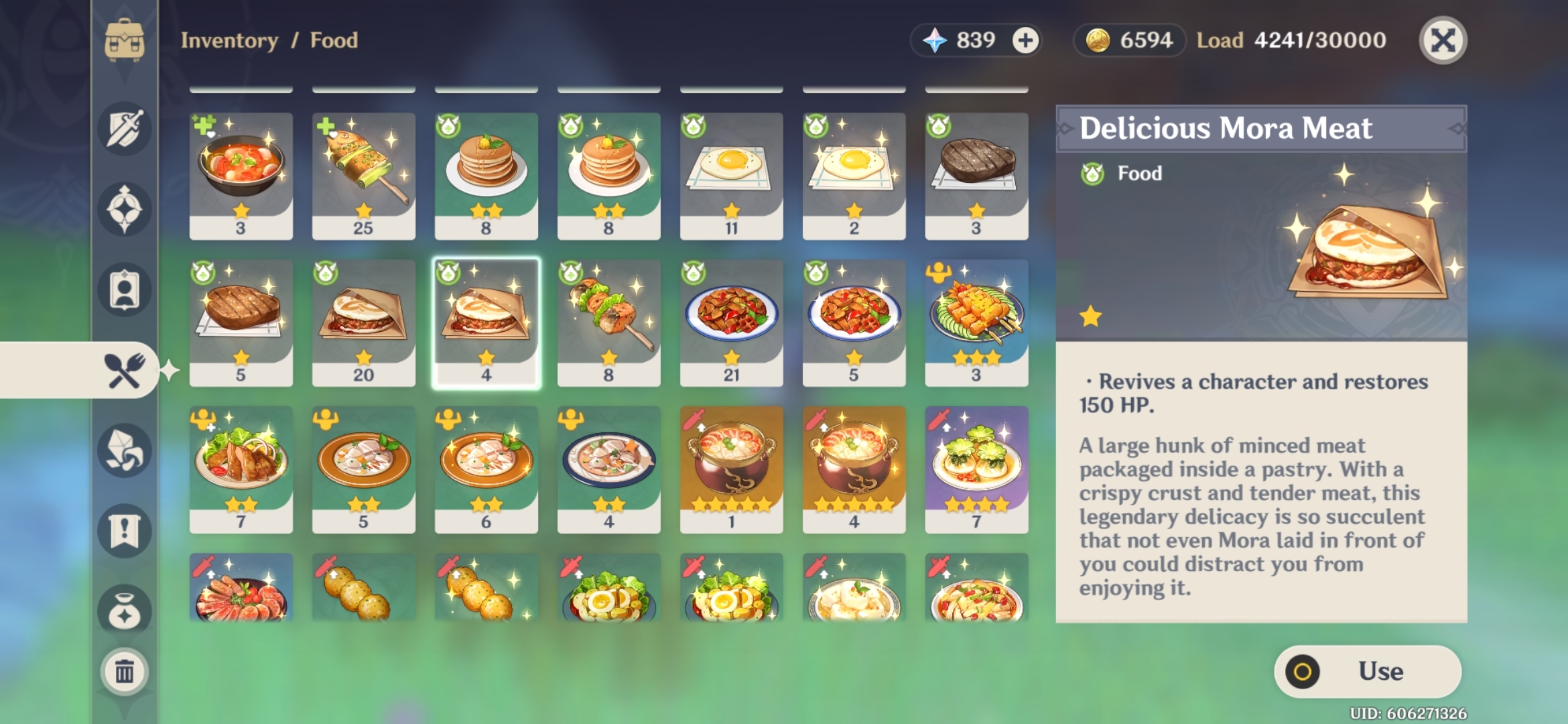
Though it might resemble an open face bao to most American audiences, this snack more closely resembles roujiamo (literally “meat sandwich”). Bao is typically made out of a steamed bun, but the Mora (the in-game currency) snack is made with flatbread. There’s some debate over whether or not the roujiamo is the world’s oldest hamburger, but it’s certainly beloved as a street food! My first experience with the roujiamo was not at one of the esteemed local restaurants (sorry), but at a Chinese-style fast food restaurant.
I feel oddly charmed about Genshin stamping the Mora currency symbol on the sandwich. There are a lot of expressions around becoming wealthy (we wish each other “I hope you get rich!” at New Year’s), and there’s certainly a precedent on stamping words on certain snack foods. Who knows, maybe you’ll get lucky with money after you eat one of these Mora sandwiches!
Adeptus Temptation
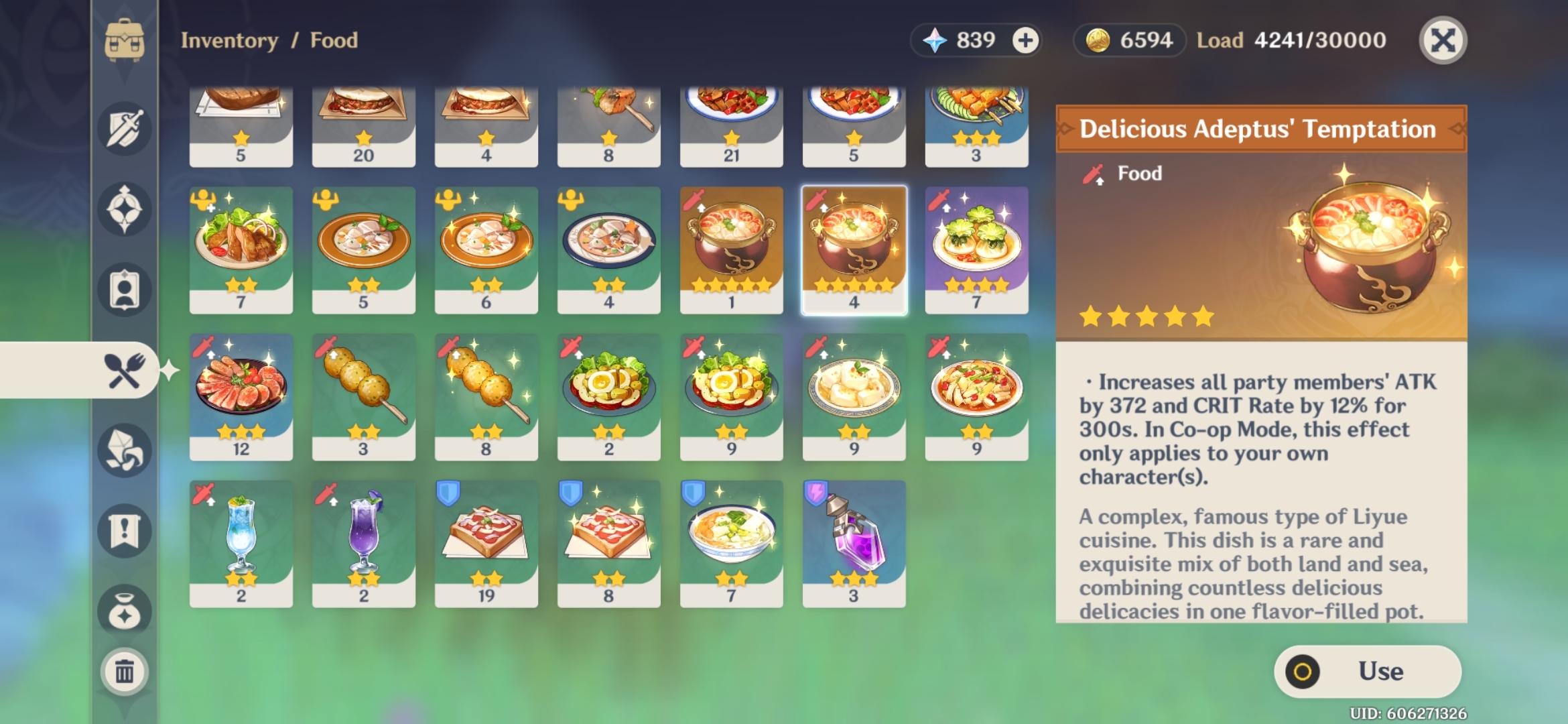
I had to Google this one, but this soup is a parallel dish to a real-world shark fin soup called Buddha’s Temptation. I’ve never had it, but it must be really good to tempt someone without any worldly desires.
There are real-life concerns about shark sustainability, but the Adeptus Temptation is made of shrimp, crab, ham, and mushrooms. I’ve made this dish in Genshin a dozen times, and the most painful ingredient to obtain is always the skittering crab. Perhaps the Adeptus are more easily tempted by the honest labors of mankind than the rarity of shark fin.
Fisherman’s Toast
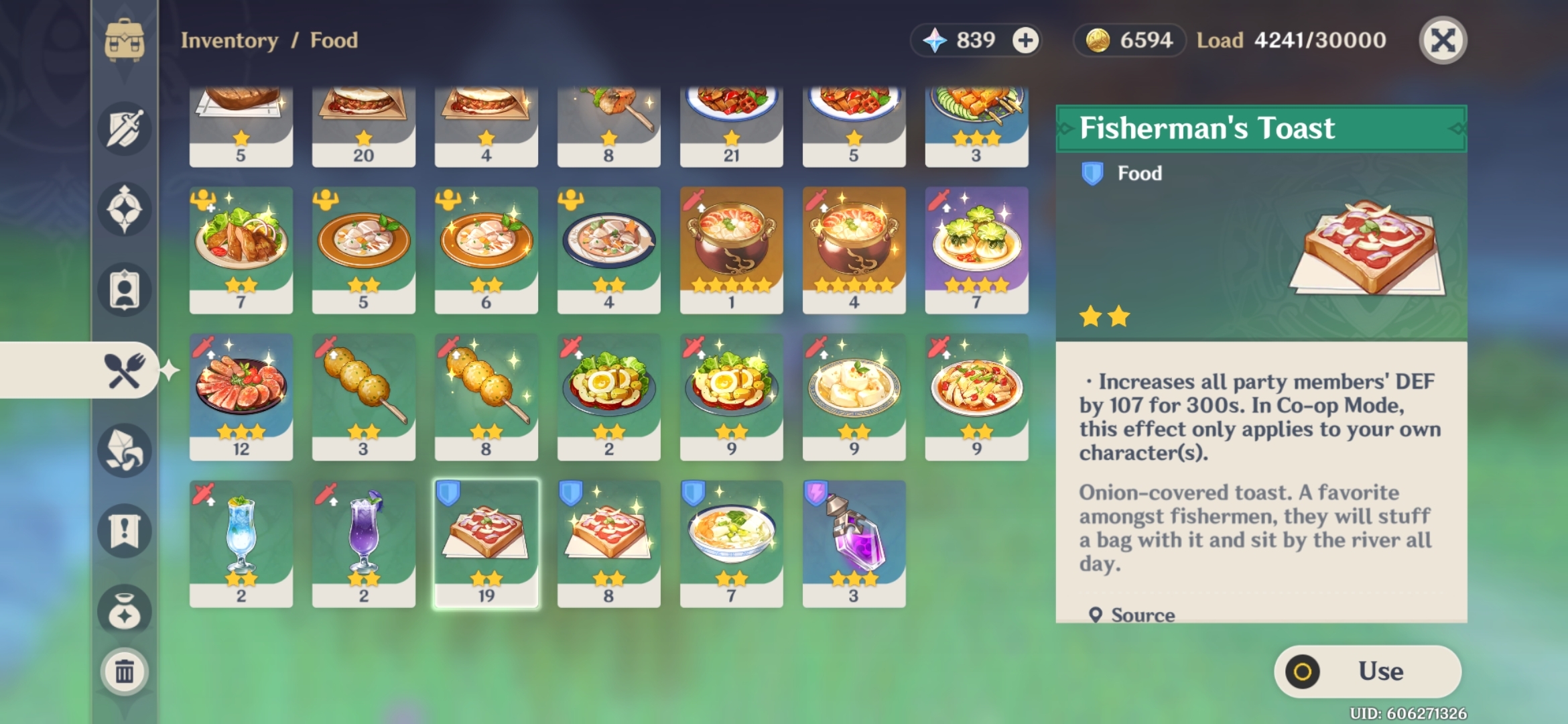
Eaten in the German-inspired city of Mondstadt, I mulled over whether or not to include this toast on the list. What’s notable isn’t the final product itself, which almost resembles a pizza. What intrigues me is the milk bread. See, I’ve never found this square shaped milk bread in any European bakery. But I have found it in Chinese, Japanese, and Korean patisseries.
For the uninitiated, Asian patisseries are European-style bakeries that are modified to suit an Asian palette. They are magical places where we can think ourselves as refined and worldly while snacking on coconut cookies, buns filled with red bean paste, and other foods that are not entirely European.
I’m left wondering if Fisherman’s Toast is a traditional local specialty of Mondstadt? Or perhaps it was invented by some starry-eyed fisherman from Liyue Harbour?
Squirrel Fish
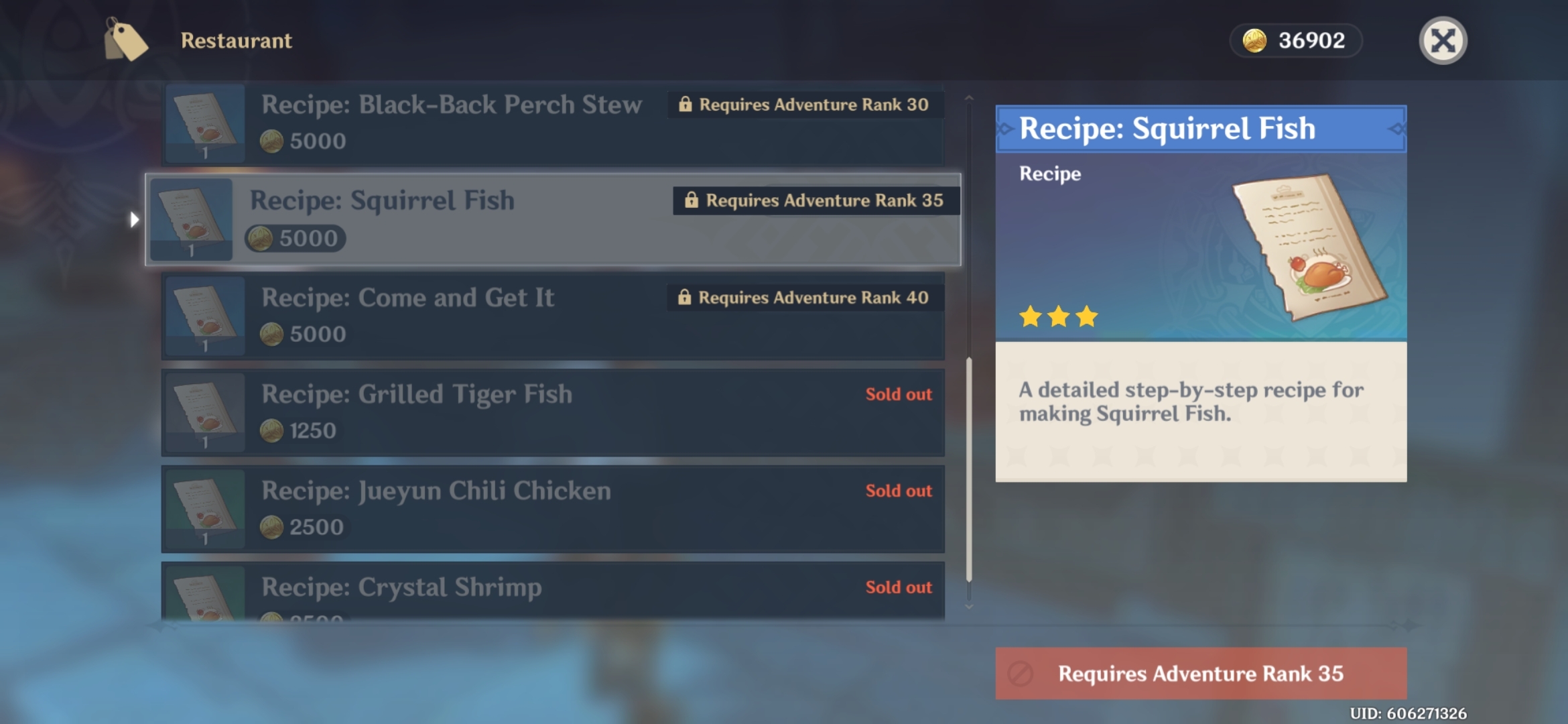
The squirrelfish is named after its bushy-tailed woodland counterpart. In China it’s prepared scored, deep fried, and dunked in sweet and sour sauce. Sounds delicious, right? So why don’t most Americans know about it? Well…
See, the fish is typically served whole. If an American doesn’t know about a famous Chinese dish, it’s probably because it’s served whole. Some chef likely struggled to sell the concept to their non-Asian customers back when the Chinese Exclusion Act was in full effect. Americans love fried foods and they love sweet and sour sauce. What most of them don’t love is whole fish. But I promise that you’ll find something delicious if you open up to the idea of staring into a glazed eye as you eat. I know that’s a big ask for many Western diners, but the flavours are worth it. For an introduction in the game, you can craft this item after buying it at Wanmin Restaurant after attaining adventure rank 35.
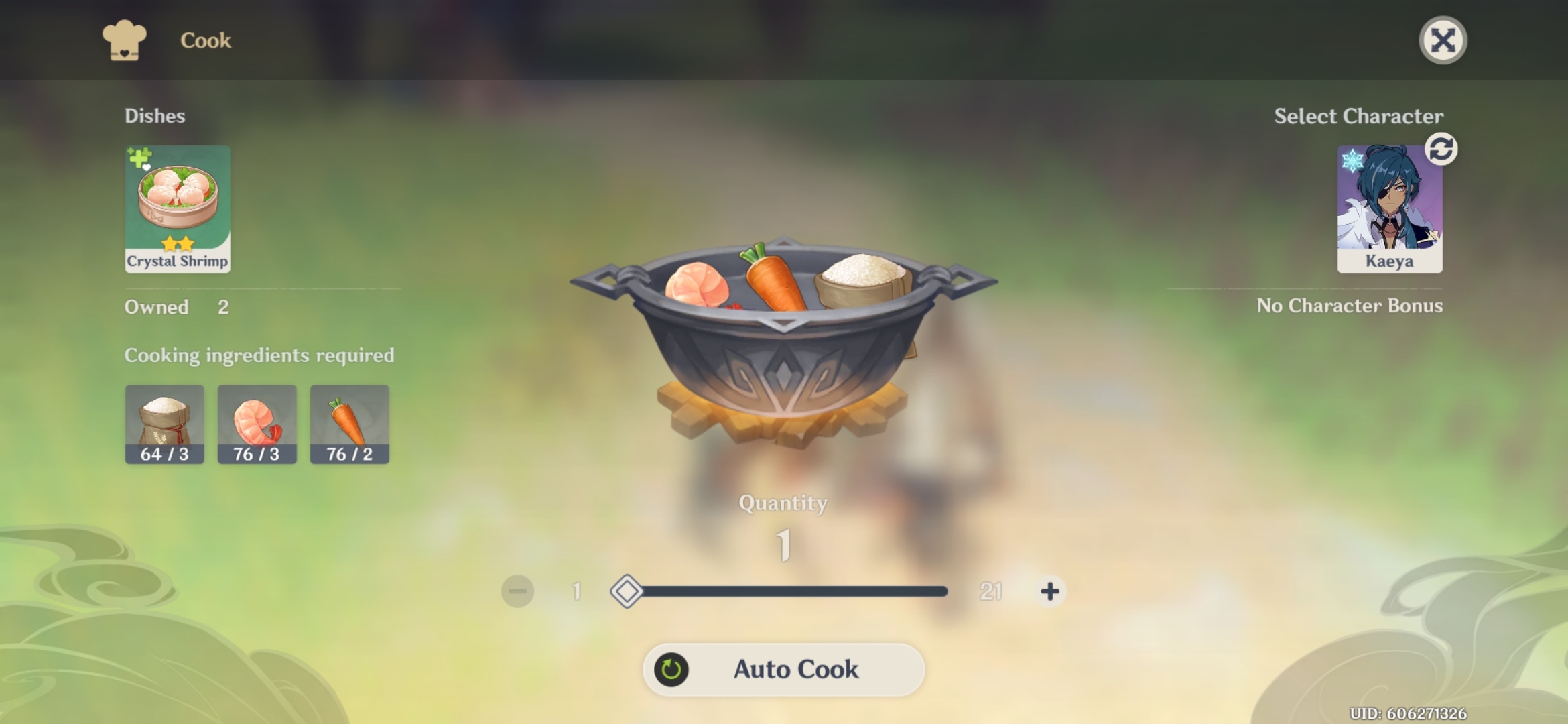
Genshin is a game that takes a lot of design inspiration from anime, but it doesn’t limit our palettes to the usual Japanese RPG fare like rice balls and ramen. I’ve seen potstickers in Yakuza Kiwami and steamed baozi in Persona 5, but this is the first roleplaying game that goes this hard in terms of representing different Chinese cuisine. Japanese games tend to represent Chinese food as foreign, or they only represent the dishes that the Chinese diaspora typically sells abroad. The inclusion of modern dishes that might not be familiar to a global audience is an ambitious design decision.
OK, this article has made me hungry as hell. Hopefully, I’ve inspired you to feel as adventurous about food as you are about dropping off mountains in Genshin Impact. Instead of bringing up your own adventurer level for recipes, most of these foods can be found at Chinese restaurants. Or if you’re feeling particularly creative, you can also source the ingredients from Asian grocery stores.
Sisi Jiang is a game designer who prefers making games over writing about them.
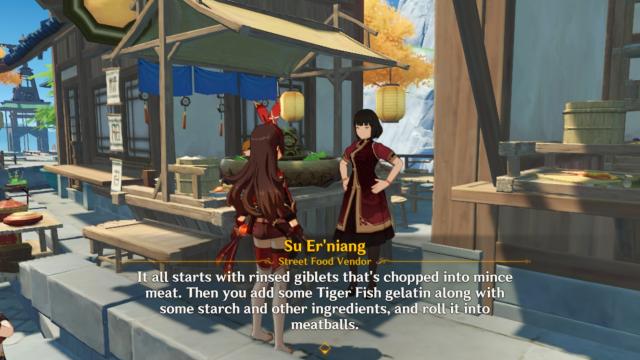
Leave a Reply